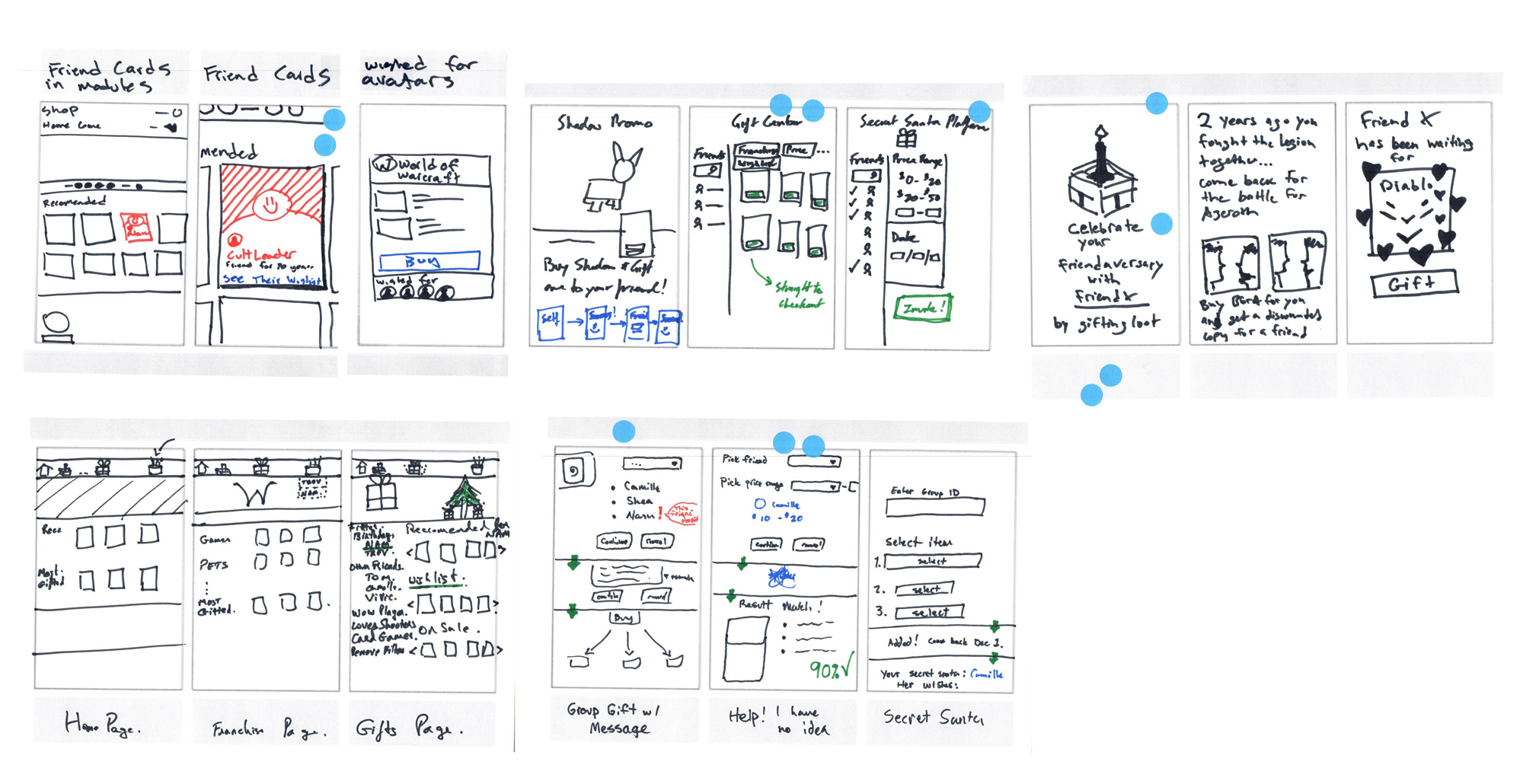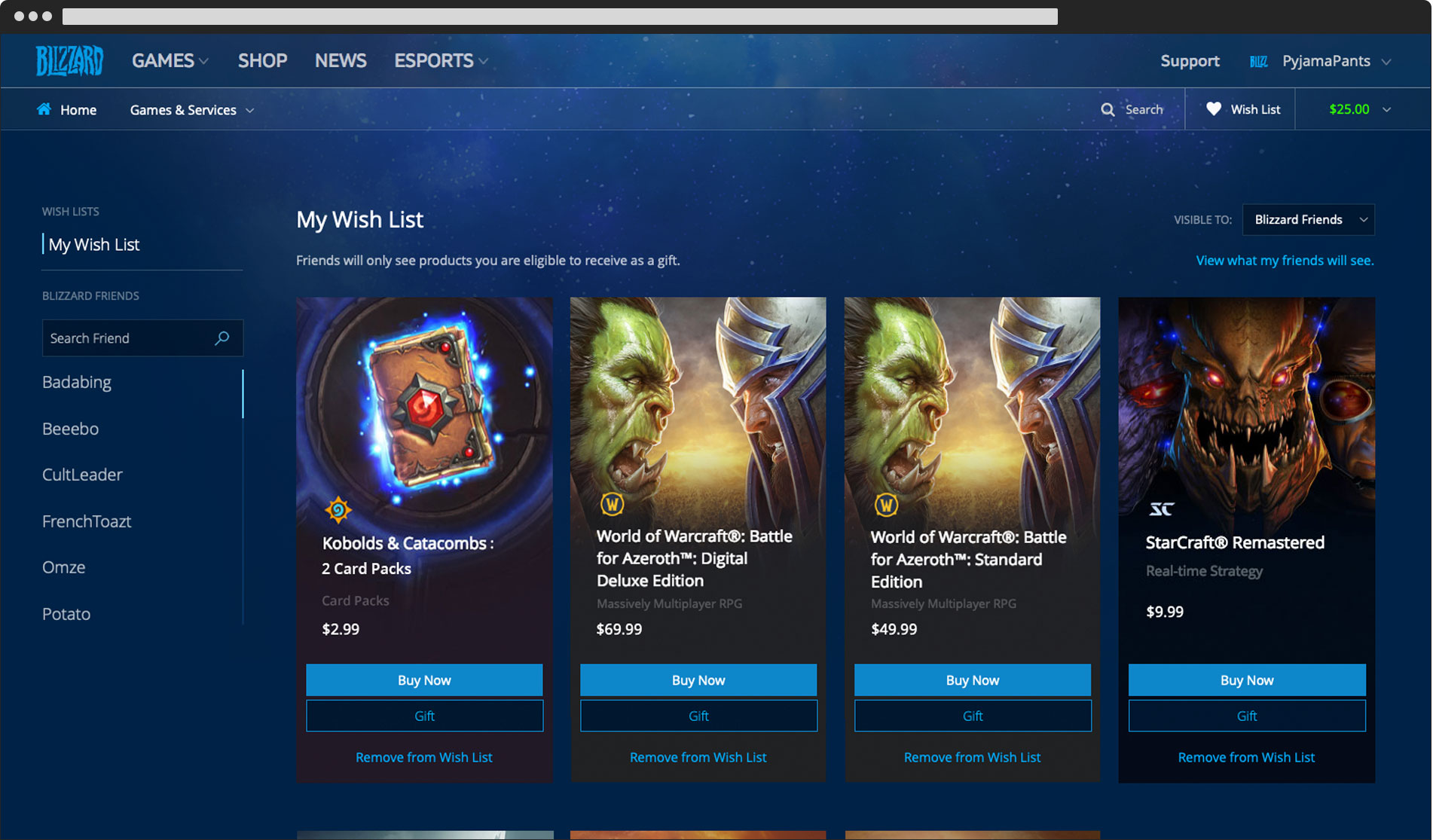
Blizzard
Gifting User Centered Strategy
Summary
Goals
- Understand players gifting behaviors.
- Understand players needs to have a delightful gifting/claiming experience.
- Understand Stakeholder’s vision and concerns.
- Learn from the Gifting and inventory release.
Contribution
- Gathered the quantitative and qualitative data.
- Analyzed the data and provided recommendations.
- Created a medium-long term strategy for the future of gifting at Blizzard.
Discovery
Research
The research team and I crafted a research plan to collect more data about our player’s behaviors. Over the course of a year, we conducted as series of studies.
- Stakeholder Interviews
- Surveys
- Concepts brainstorms sessions
- Concept Studies
- Usability studies

Stakeholder Insights
As part of crafting the user centered strategy, it was essential to align with our various stakeholders. I wanted to make sure their perspectives, concerns and priorities were understood so we had alignment moving forward.
We interviewed Blizzard’s leadership, Customer Support, Risk and the different engineering departments involved in the project.
- Build more attachment and engagement among players.
- Create opportunities for players to connect within and outside the game.
- Provide an epic claiming experience.
- Consider new opportunities to popularize gifting in both inventory and Blizzard’s digital shop.
User Insights
Through the user studies we were able to better understand our player’s behaviors with respect to gifting.
- Our players showed 3 types of gifting behaviors: Gift to friends and family for special occasions, Gift to treat other players and Reward/Tipping to team members or streamers.
- Players would have 2 distinct mental models when gifting: Find a gift, then find a friend to give it to or Find a friend, then find a gift to give.
- Players would choose digital gifts if they played regularly with the friend they were gifting to; otherwise, users preferred to gift physical products from the Gear store. Players felt physical products are more tangible and memorable. Picking a digital gift requires knowledge of the game, the purpose of the item in the game as well as friend’s preferences and habits.
Remaining Challenges
- Gifting options are limited.
Most gifts in the digital store answers the first behavior, gifting for special occasions to friends and family, but users didn’t find products or gifting options for the treating/tipping behavior. - Gift delivery flow is ambiguous for senders.
There were no options to choose when the recipient would receive the gift. - Gift claiming was not very exciting for recipients.
- Recipient can’t act on a gift they don’t want or can’t use.
Strategy
- Answer all gifting/treating/tipping behaviors by increasing gifting opportunities.
- Make the gifting experience reassuring for senders.
- Optimize the current gifting checkout flow through AB tests.
- Make the opening experience more exciting for recipients.

Results
For confidentiality reasons, I can’t provide the detailed projects but, here are some of the initial concepts tested during the concept study.



